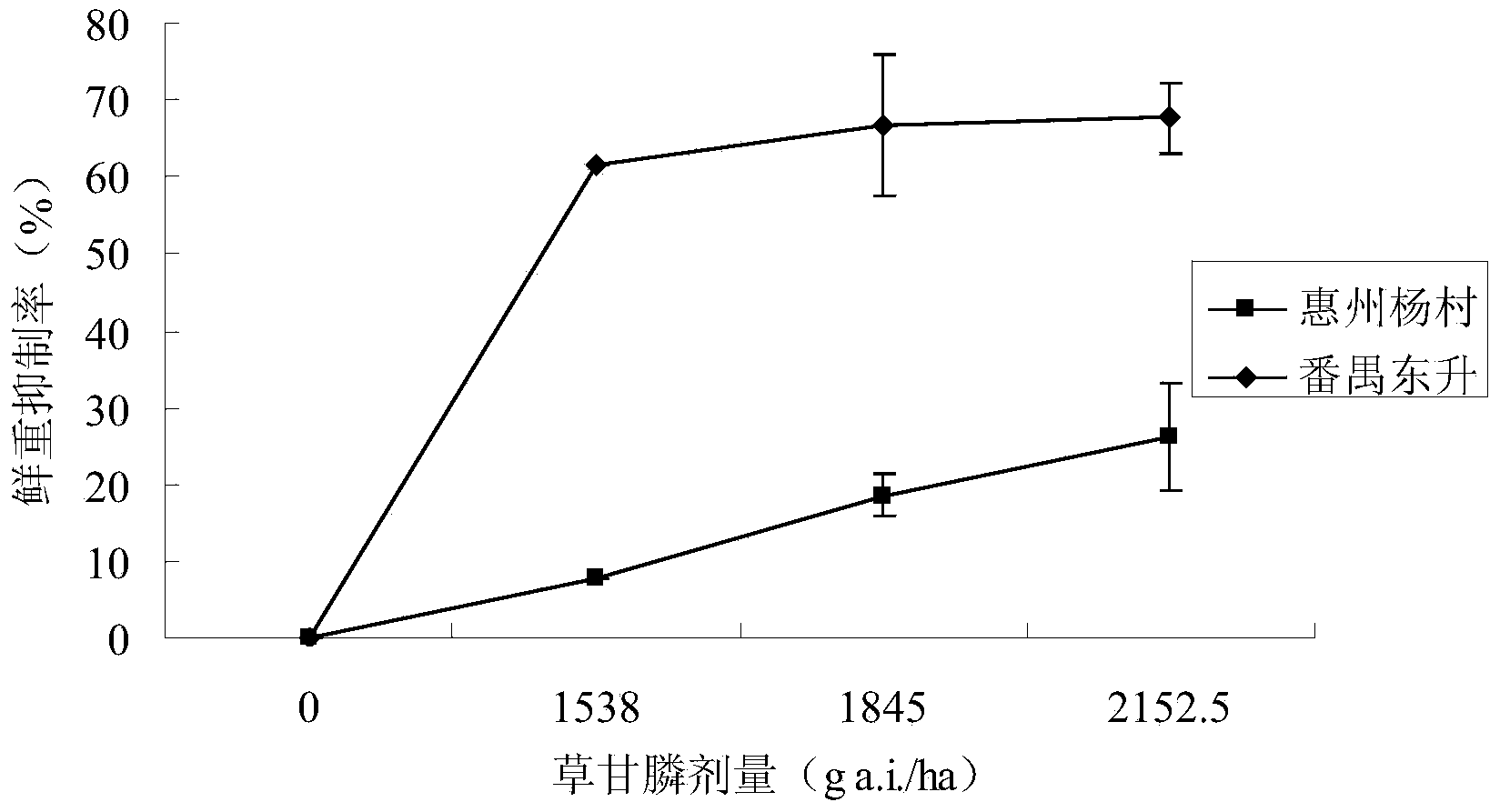Identification method for rapidly detecting drug resistance of plants on glyphosate and application of method
An identification method and glyphosate technology are applied in the identification field of rapid detection of plant resistance to glyphosate, which can solve the problems of high cost and the like, and achieve the effects of low cost, quick effect and simple operation.
- Summary
- Abstract
- Description
- Claims
- Application Information
AI Technical Summary
Problems solved by technology
Method used
Image
Examples
Embodiment 1
[0032] Two kinds of goosegrass preserved in the weed room of the Institute of Plant Protection, Guangdong Academy of Agricultural Sciences (Huizhou Yangcun, collected in Yangcun Guava Garden, Huizhou City, Guangdong Province in September 2011; Panyu Dongsheng, collected in Guangzhou City in September 2011 The biotypes (3-4 leaves stage) of goosegrass in Dongsheng Vegetable Farm, Panyu were measured. 64 plants were selected for each biotype, and each plant was transplanted into a plastic cup filled with soil, until it grew normally to 4-5 leaves. stage, select the 2nd or 3rd leaf, and drop 10uL of different doses of glyphosate liquid on both sides of the midrib of the selected leaf by the micro-injection method (1uL per drop, 10 drops in total), and the dripping doses are 1538 , 1845 and 2152.5g a.i. / ha, 16 plants in parallel for each dose, and 16 plants of the two biotypes were retained without glyphosate as a comparison. Three days after the treatment, the Panyu goosegrass bi...
Embodiment 2
[0034]Goosegrass A and B at the 2-3 leaf stage were collected from two places in Shijing, Baiyun District, Guangdong Province (both were collected in September 2011 from the ridges of vegetable fields of different farmers in Shijing, Baiyun District, Guangzhou City), and transplanted into pots indoors. There are 5 plants per pot, and they will grow to 4-5 leaves and wait for testing. Select the second or third leaf, and drop 10 uL of different doses of glyphosate solution to both sides of the midrib of the selected leaf by the micro-injection method (1 uL per drop, 10 drops in total), and the dripping doses are 1538 , 1845 and 2152.5g a.i. / ha, 5 plants were paralleled for each dose, and 5 plants of the two biotypes were retained without glyphosate as a comparison. The results of 7 days after treatment showed that the three doses of goosegrass A in Baiyun District had no symptoms at the sampling sites and plants within the designed dose range, and the symptom level was 0, which...
PUM
 Login to View More
Login to View More Abstract
Description
Claims
Application Information
 Login to View More
Login to View More - R&D
- Intellectual Property
- Life Sciences
- Materials
- Tech Scout
- Unparalleled Data Quality
- Higher Quality Content
- 60% Fewer Hallucinations
Browse by: Latest US Patents, China's latest patents, Technical Efficacy Thesaurus, Application Domain, Technology Topic, Popular Technical Reports.
© 2025 PatSnap. All rights reserved.Legal|Privacy policy|Modern Slavery Act Transparency Statement|Sitemap|About US| Contact US: help@patsnap.com

